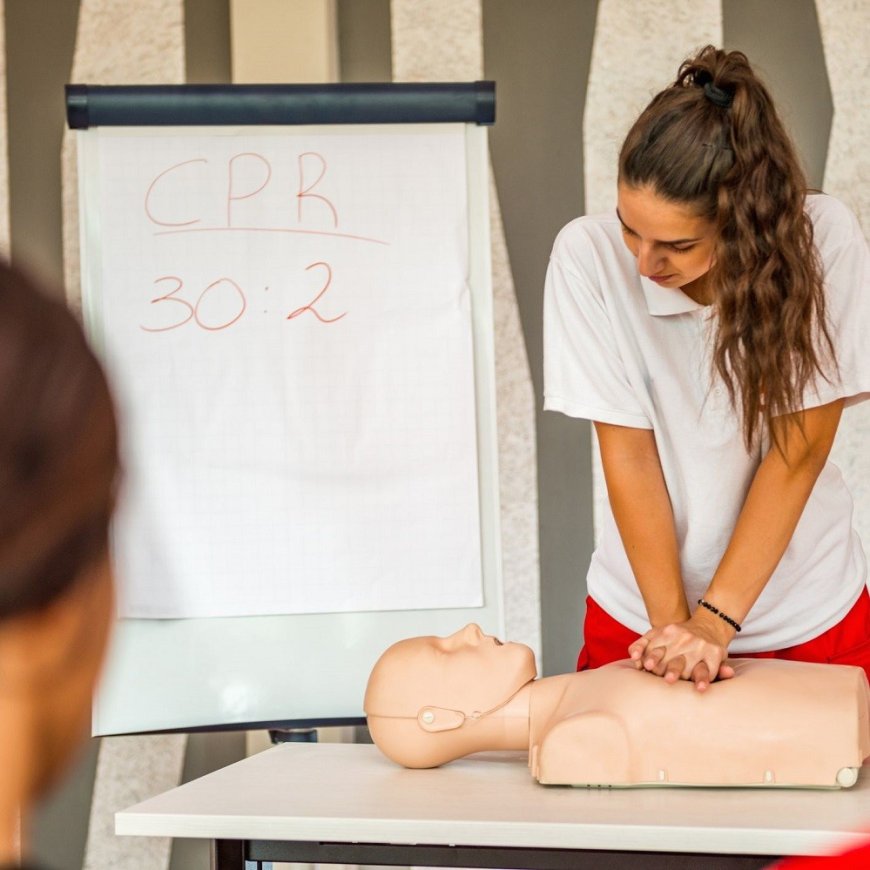5 vital facts about CPR
the training company CPR center and together we sort out some of the most common misunderstandings about CPR. 5 vital facts about CPR.

Are you recently trained in CPR? We sincerely hope that the answer is yes. Properly performed cardiopulmonary resuscitation can in fact mean the difference between life and death. We have talked to the training company CPR center and together we sort out some of the most common misunderstandings about CPR. 5 vital facts about CPR.
- It is never stupid to perform CPR
It is common for ribs to break, but proper CPR is never dangerous or harmful to the heart. It is literally vital that you perform CPR on suspicion of cardiac arrest. Research shows that every minute of cardiac arrest reduces the person's chance of survival by ten percent. After only 3 minutes of cardiac arrest, the chance of survival has decreased by 30 percent. You therefore never have to hesitate, at the slightest suspicion of cardiac arrest - alert immediately and start CPR.
- Myocardial infarction and cardiac arrest are not the same thing
There are approximately 28,000 heart attacks and 8,000 cardiac arrests per year in Sweden. In the event of a cardiac arrest, the heart's pumping capacity is out of balance, or completely out of order. The person is unconscious, not breathing at all or breathing abnormally. In a heart attack, on the other hand, the person can be awake and even breathe on their own. The heart is strained, usually caused by a blockage in the coronary arteries of the heart. People who suffer a heart attack experience severe pain and may be strained and have difficulty breathing. Cardiac arrest and myocardial infarction are not the same thing, but about 40 percent of people who suffer a heart attack are at risk of having a cardiac arrest within the first hour if they do not receive help in time.
Must Read: Class 9th to 12th start on January 18th
A defibrillator does not always start the heart
In the event of a cardiac arrest, you should sound the alarm, start with CPR and switch on a defibrillator if available. However, the defibrillator does not always deliver shocks. When the heart is completely still and does not beat, the defibrillator has no function at all. When the heart is still, it is cardiopulmonary resuscitation you should take. That is, puffing and chest compressions. A defibrillator will only give electric shocks when there is movement in the heart, so-called ventricular fibrillation. Ventricular fibrillation means that the heart does not pump properly, but it does not completely lack movement. The defibrillator then works by delivering current shocks to give the heart a chance to start beating properly again.
- Inhalations are crucial
There are perceptions today that you do not need to perform breaths. This is wrong. Without breathing, the person does not receive new oxygen, and if there is no oxygen in the blood, the brain cells can begin to be damaged. The recommendation is to do 30 chest compressions followed by 2 breaths and repeat this until the ambulance arrives, until the person shows clear signs of life or until you simply do not have enough energy to continue. The most important thing is that you do something rather than nothing at all. So it is better to just do chest compressions than nothing. If it is a child, the breaths are absolutely crucial, so you should always start by blowing air five times before starting the CPR procedure on a child.
- Theory is not enough
It is not enough to learn CPR through theory. You learn CPR best by attending a practical training where you get to practice with your hands and body. Through practical exercise, knowledge gets stuck in the muscle memory, which immediately becomes incredibly important if the accident should occur. In the event of an accident, you may suffer from tunnel vision and find it difficult to think logically, this is where muscle memory is essential. Studies show that CPR knowledge begins to be forgotten after three to six months after a course. Therefore, it is recommended to repeat a practical CPR training at least once a year.
